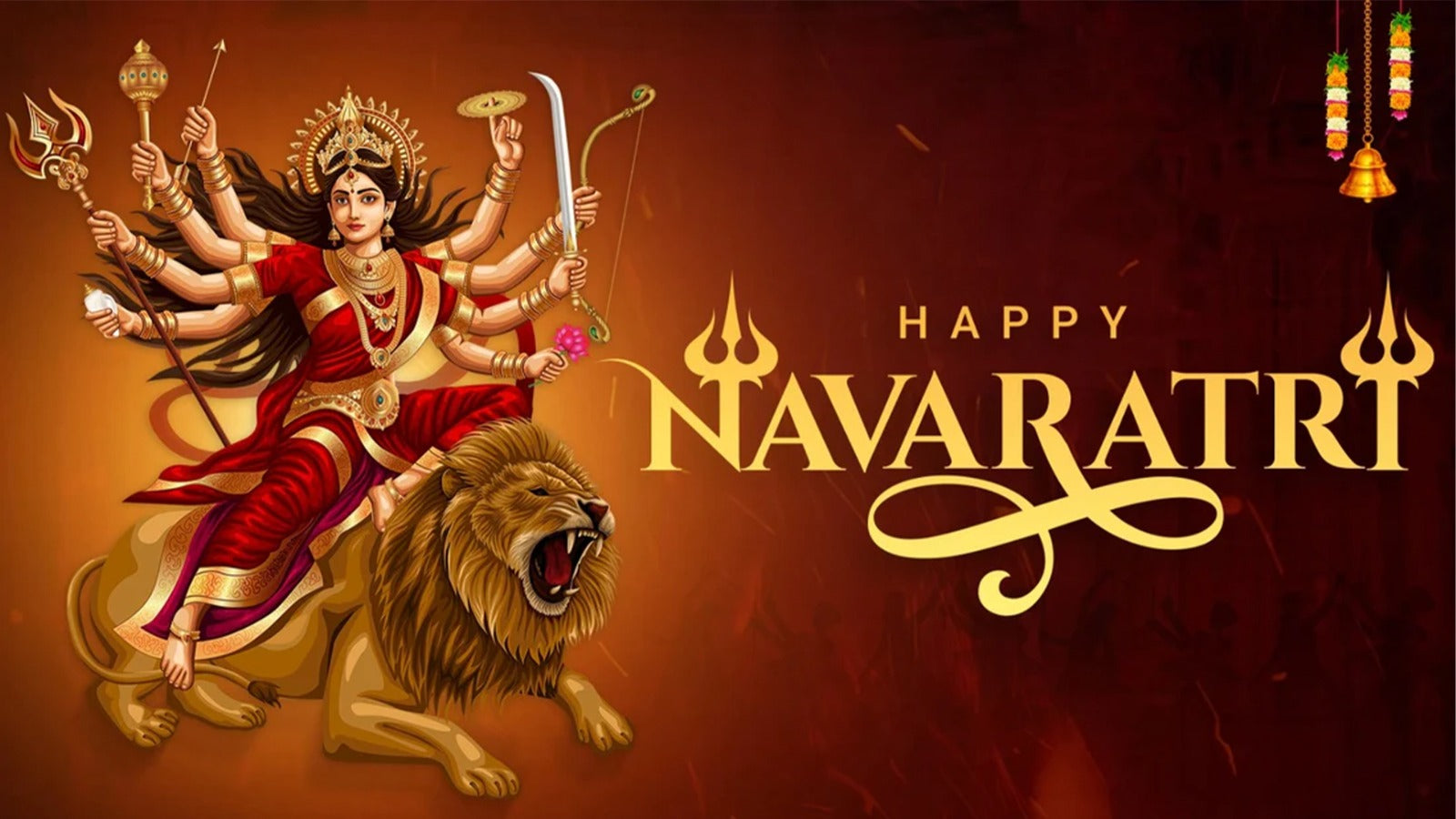Navarathiri
What is Navratri and why do we celebrate it?
Navratri is a Hindu festival that spans nine nights and is celebrated every year in the autumn. It is observed for different reasons and celebrated differently in various parts of the Indian cultural sphere. Theoretically, there are four seasonal Navratri. The legend associated with Navratri speaks about the great battle between the powerful demon Mahishasura and Goddess Durga. … Each year, on each day of Navratri, an incarnation of “Goddess Durga” is worshipped to celebrate the day of her victory over Mahishasura, and the ultimate victory of ‘Good over Evil.”
Navratri, a vibrant festival symbolizing the triumph of good over evil, is celebrated with great fervor and devotion across India. This nine-day celebration honors Goddess Durga and her nine divine forms. Navaratri is an annual Hindu festival observed in honor of the goddess Durga, an aspect of Adi Parashakti, the supreme goddess. It spans over nine nights, first in the month of Chaitra, and again in the month of Ashvin. Navaratri is a festival dedicated to the Divine Feminine, most often associated with Durga Ma and Goddess Parvati.
Celebrations and Rituals….
This festival lasts for nine days and nights, during which various forms of the Devi are worshipped. Navaratri celebrates Her various incarnations and victories over terrible demons. One such sacred triumph was a battle against the powerful demon Mahishasura, who could not be killed by any man or God. On the 10th day Durga Ma was victorious. It is believed that Rama, the seventh avatar of Vishnu, was advised to worship the Goddess to ensure victory over his enemy Ravana.
During each of the nine days of this battle Rama worshipped a distinct form of the Goddess. He finally achieved victory on the day after Navaratri, known as Vijaya Dashami/Dusshera/Dasara. In Nepal a version of this festival to the Goddess is called Dashain and lasts 15 days with the 10th day called Vijaya or Bijaya Dashami. Each day of Navratri has an associated color which devotees are encouraged to wear.
Some traditions use each night to honor a different form of the Goddess Durga
Known as the warrior form of Parvati, who is the consort of Shiva (God of Transformation), Durga is called the Mother Goddess, as she defends the oppressed with a fierce wrath, as well as looks after creation with a caring warmth.
Some traditions celebrate Navaratri by using each day to honor one of the nine forms of Durga, all of which display the following specific qualities and attributes:
- Shailaputri — The first night of Navaratri is dedicated to Shailaputri, the daughter of Hemavana, who is the king of the Himalayas. Seen as the “mother of nature,” she is depicted riding a bull and holding a lotus flower (representing devotion) in one hand and a trident (representing past, present, and future) in the other.
- Brahmacharini — The second night is dedicated to Brahmacharini, whose name means “one who practices austerity.” Said to bestow success and victory, she holds prayer beads in her right hand and a water pot in her left, representing the practice of penance in pursuit of an auspicious goal.
- Chandraghanta — The third night is dedicated to Chandraghanta, who’s named for the half-moon shaped like a bell on her forehead, which is described as her third eye. With ten hands holding various weapons, Chandraghanta rides a tiger, establishing justice and bestowing strength and courage to devotees.
- Kushmanda — The fourth night is dedicated to Kushmanda, whose name means “creator of the universe.” Usually depicted with eight arms, she rides a lion and is known for bringing energy and light to the world.
- Skandamata — The fifth night is dedicated to Skandamata, who’s named for being the mother of Kartikeya, a deity of yoga and spiritual advancement who’s also popularly known as the “god of war.” Seated on a lotus, emphasizing her divine nature, she has four arms and carries an infant Kartikeya on her lap.
- Katyayani — The sixth night is dedicated to Katyayani, who is known as one of Durga’s fiercest forms. With wild hair, and depicted with up to 18 arms, all holding weapons, she dispels darkness and evil, bestowing peace among her devotees.
- Kalaratri — The seventh night is dedicated to Kalaratri, who is also known as Shubankari, which means “doing good” in Sanskrit, as she provides both fearlessness and auspicious results to her devotees. Dark-complexioned, with four arms and disheveled hair, she is also among Durga’s most menacing forms.
- Mahagauri — The eighth night is dedicated to Mahagauri, whose name means “extremely white.” Wearing white, she is a symbol of tranquility and serenity, alleviating the suffering of her devotees.
- Siddhidatri — The last night is dedicated to Siddhidatri, whose name means “giver of supernatural powers.” Seated on a lotus flower, she instills devotion into the hearts of devotees, granting them happiness and wisdom.
Though Navaratri is a deeply spiritual festival, specifically about honoring the Feminine Divine, everyone and anyone can participate in whatever capacity best suits them.
More austere worshippers may choose to spend most of the nine days fasting and meditating, while others might pray to a particular murti (image or statue of a deity). Some may partake in the livelier aspects of the holiday, like the garba dance, while some may choose to simply watch. And then there are those who will do all of the above, finding as many different ways to immerse themselves in the spirit of the festival as they can.
Ultimately, Navaratri is about inviting and engaging all of the public in honoring the fiery protective and soft-hearted energy of the Divine. It is also, however, about encouraging everyone to realize this energy is within all of us, and that the world is greatly benefited by us becoming more aware of and appreciative of it.

